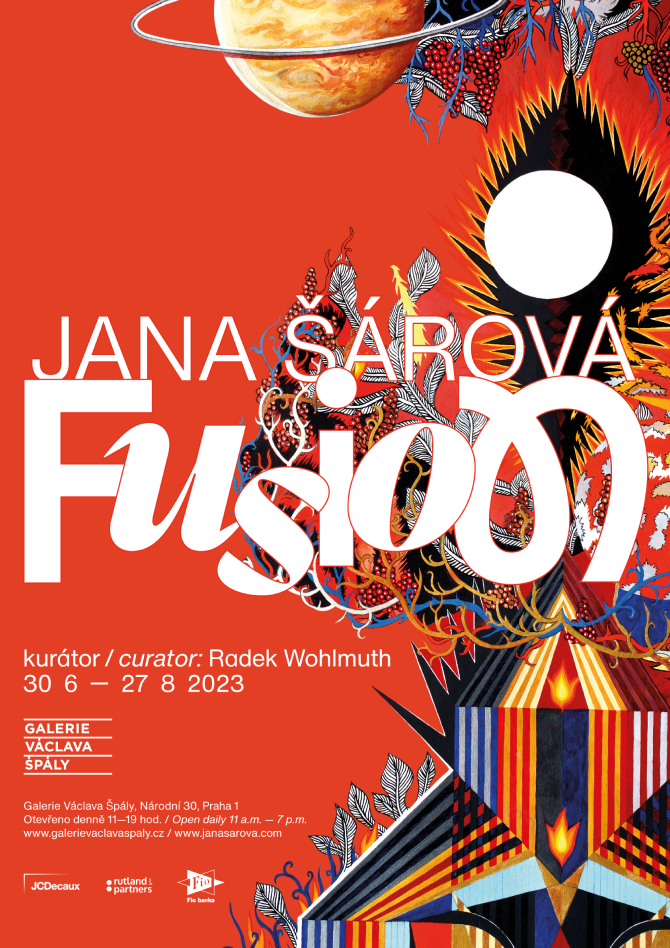
It is probably difficult to find a more accurate term for the work of Jana Šárová than fusion. It is particularly apt because it characterizes both the inspirational and formal essence of her paintings. On the one hand, they are closely linked to personal life, as a combined essence of what surrounds her, what she has experienced, or what she thinks and feels. On the other hand, it is a unique synthesis of various visual influences, from which she consciously or intuitively draws and they assert themselves in a changing ratio, dynamics and mutual relationship into the final image pattern. Both platforms also overlap, as a dual content and optical side of her painting, and only their merging, i.e. a kind of fusion of fusions, creates the full quality of the image. Although Jana Šárová’s painterly language is anchored in reality and her work is based on realistic morphology, so that it is possible to think of her as a storyteller, almost never can they be read unambiguously. There is always some element that challenges the straightforwardness of interpretation. Sometimes it is a difficult-to-transfer self-questioning experience, other times an effort to make seemingly ordinary things appear differently than one is used to. In recent years, the collage-like structure of her paintings has also worked in this regard, creating an open visual scheme from them. This naturally manifests itself more as an individual catalyst for feelings and associations than as a clear horizon of events and occurrences that stood behind the creation of the image. Even though the appearance of Jana Šárová’s works has changed over time, it can be argued that in principle it has always been a certain form of visual diary. The initial creative phase already indicated priorities that determine her work to this day. Very early on, there was a clear inclination towards working on paper. This results in handwriting with a strong drawing accent. As one of the few, she also fully uses the fullness and brutality of colors that watercolor currently provides her.
It is also significant to cover the surface of the image ‘on the fall’, so that the motif is located in an unclosed infinity and it does not matter whether it is formed by impenetrable darkness, stereometric composition or ornamental jungle of organic shapes. The initiating image that defines her work up to the present day is Crazy Garden (2018), which represents a kind of synthesis of personal exploration of painting. It is also associated with a shift from more literal work according to a model to an emotive story. The current development was influenced mainly by inspiration coming from the intensity of places, whether actually known or mediated by photographs or narration. The inhibition regarding extreme colorism was removed and liberation from the boundaries of Western art tradition was brought by a stay in India. Another chapter was opened by books about Japan or stories from South America and their transformation into their own thought and visual world. A trip to Rome was also significant, which opened self-awareness in terms of confirming cultural roots. But it’s not just about attractive destinations; sometimes even essentially banal encounters with reality are written into her paintings. In recent times, Jana Šárová has been interested in an overall experience that usually comes from her own mental inventory. She herself does not live in such a way as to consume media everyday life. Her presence has a more complex essence than usual today or tomorrow. It is more about a type of personal eternity that is epochal in terms of life experience. Her visual labyrinths composed of stories and emotions are information about her own life with references to other cultures that reflect today’s global situation when the world has shrunk to an unprecedented extent. They are inherently two-phase – fast and slow at the same time. They embody the possibility to see everything at once in them, and yet experience the feeling that it continues and leads somewhere further.
Radek Wohlmuth